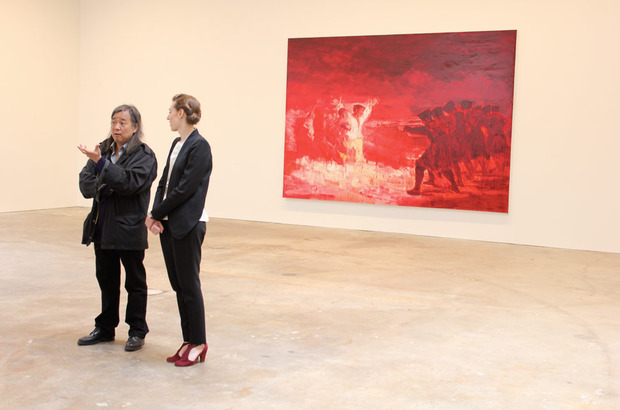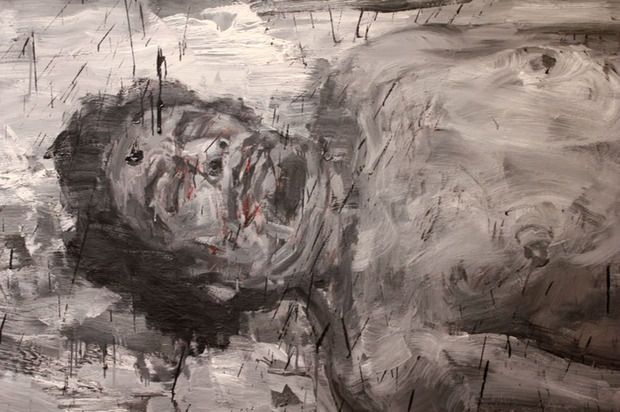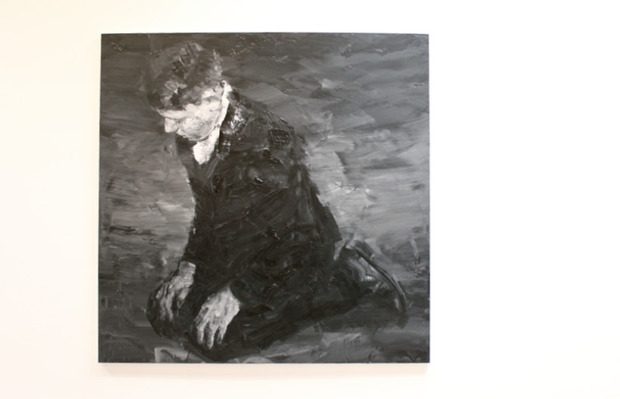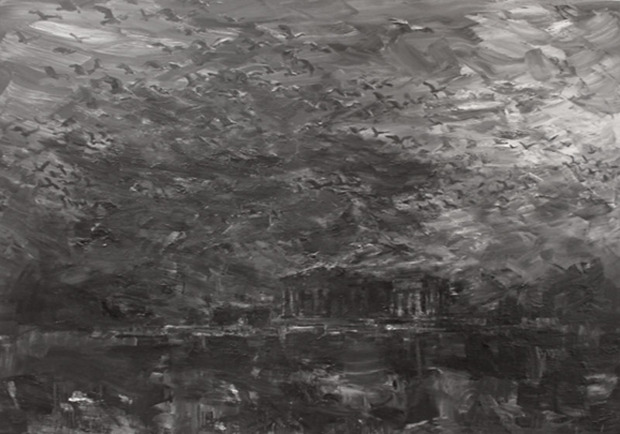Black Paintings
Yan Pei-Ming captures past and present in five large-scale paintings


The first thing Yan Pei-Ming said while presenting his new exhibition, “Black Paintings” at David Zwirner was “I aspire to be an artist, period. Not a Chinese artist.” Though born in Shanghai, the artist is now based in Dijon, and speaks French—not Chinese—through a translator. “My work,” he continued, “does not have a ‘made in China’ feel to it. I’ve always tried to speak in a universal pictorial language.”

Pei-Ming certainly has a knack for choosing subject matter with a global reach. In the past, he’s gained notoriety for his large, monochromatic portraits of people like Lady Gaga, Bernard Madoff, Michael Jackson and Maurizio Cattelan. In this show, however, you won’t see many familiar pop-culture faces, save for Muammar Gaddafi in the work “Gaddafi’s Corpse”, which is hard to discern without reading the title first. In “Pablo”, Pei-Ming shows Pablo Picasso as a huddled young boy wearing large men’s shoes, an imagined memory of the great painter playing dress-up, perhaps, in his father’s clothing. “Exécution, Après Goya”, a bright red homage to Goya’s “The Shootings of May Third 1808“. The show’s title, says Pei-Ming, is “derived from a late series of wall paintings by Goya, since transferred to canvas. In these works, not originally intended for public view, the Spanish artist offers haunting visions of humanity’s darker side.”

“When Goya worked he had to work from his imagination, but in my case I’m working from documentation” says Pei-Ming, referencing the artist’s historical paintings. “We’re surrounded by photographs and documents that attest to what has happened and I use that as source material.” Though it’s doubtful that much original source material was needed for “Pablo”, it’s still true for most of Ming’s work, including his dark interpretation of the Acropolis, which he describes as “the cradle of Western civilization and democracy.” Titled “All Crows Under the Sun Are Black!”, Ming mounted it first in his show, as his way of putting “it in dialogue, face to face with art in the contemporary world,” he says.
“Moonlight” is another monochromatic gray painting depicting an immigration over rocky waters, illuminated by brushstrokes of white moonlight on the waves. Painted in much the same style as “All Crows Under the Sun Are Black!”, it too is a landscape that features a barely discernible outpost on the dark horizon, but the Acropolis is so dark it almost fades into the feverishly painted background. If you’ve ever seen a picture of the Acropolis you know that it’s huge and white, the centuries-old pillars standing strong on their flat-topped perch above Athens—and at night it’s lit up like the Lincoln Memorial. Here, Ming has shrunk it down and killed the lights, blending it so thoroughly into the background he seems to almost be wiping it from history itself.

“Black Paintings” marks a departure in Ming’s work not only from his focus on contemporary culture but also in his point of view. Instead of traditional portraiture, we see his figures splayed out, crouching on the ground or facing a firing squad. They’re not only shown in scene, in a narrative, but as part of a larger historical context, one that’s not pinned down to a specific moment in time. Instead of immortalizing a cultural icon at the height of their fame, Ming is depicting history in progress. He goes back in time to moments history may have overlooked in an attempt to connect the recent and distant past, and though he makes his point of view clear in the subjects he chooses to paint, those choices don’t represent a distinctly Chinese or even Eastern perspective, but one that’s uncompromisingly universal.
“Black Paintings” runs through June 23, 2012 at David Zwirner.
David Zwirner
525 W. 19th St.
New York, NY 10011












